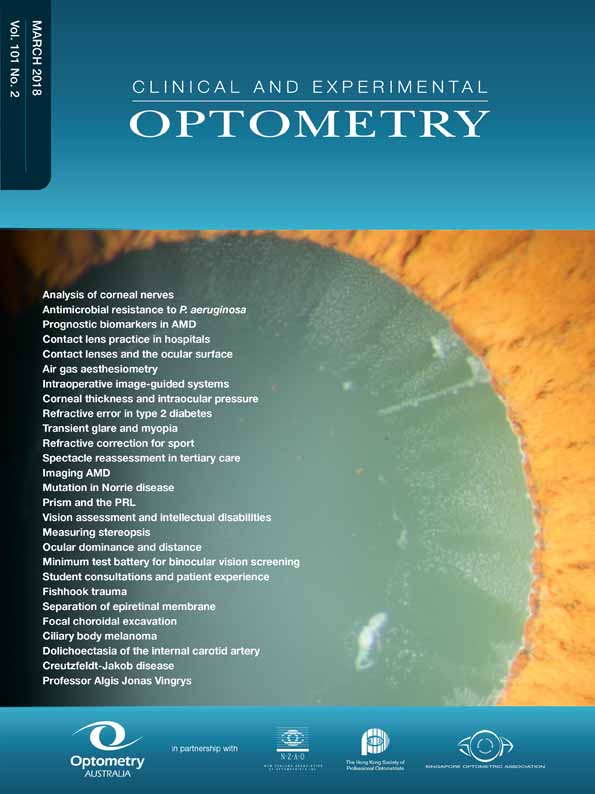Sighting ocular dominance magnitude varies with test distance
Abstract
Background
Ocular dominance can be defined as the preference of an individual for viewing with one eye over the other for particular visual tasks. It is relevant to monovision contact lens wear, cataract surgery and sports vision. Clinically, the measurement of ocular dominance is typically done at an arbitrary distance using a sighting test, such as the hole-in-card method that has a binary outcome. We investigated the effect of test distance on ocular dominance measured using a binocular sighting test that provided a continuous measurement of dominance.
Methods
Ten participants with normal binocular vision took part in this study. Their binocular sighting ocular dominance and phorias were measured at one, two, four, eight and 10 metres. During the dominance tests participants made a binocular alignment judgment and then were asked to indicate the relative alignment of each eye using a visual analogue scale as a reference.
Results
Eight participants had strong ocular dominance (five right, three left). For these participants, there was a significant increase in the magnitude of dominance with increasing test distance (p < 0.001). This could not be fully explained by changes in convergence demand. Two participants showed very weak ocular dominance across all test distances (p > 0.05), despite changes in convergence demand.
Conclusion
When ocular dominance is present, its magnitude varies significantly with test distance. This has significant implications for the accurate measurement of ocular dominance in the clinic and may reflect the neural processes that influence eye preference.




